|
Tuesday/Wednesday: Robins - Glasgow Harbour Tuesday, July 20 I lay curled up in my sleeping bag and listened to the marine forecast. The mild weather of the morning wouldn't last, as the forecast had been upgraded to gales with the possibility of storm force winds for all the Atlantic coast. These winds would diminish to strong by Wednesday evening. Even allowing for overly pessimistic forecasting by the weather service, it was not summer weather at all. I decided to walk around the inlet to Arichat for the exercise. I had barely got on the road when a fellow going in the other direction, turned his truck around, and insisted on giving me a ride into Arichat. He was laid off from a fish plant and was working off and on in construction. |
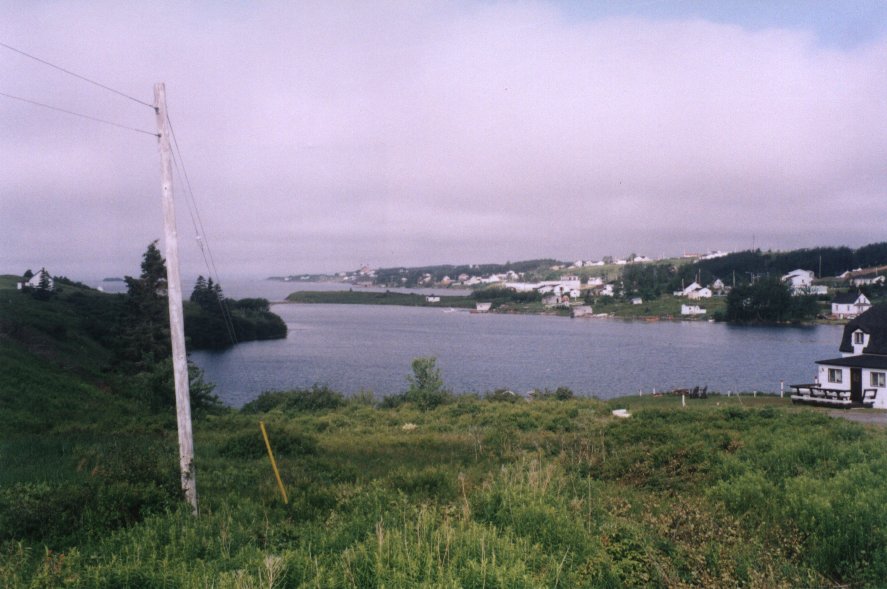 |
|
.. |
| Returning to Naomi, I sailed
from the wharf with a light southerly breeze. The fish plant
in Arichat was busy and a large stern-trawler with steam up lay alongside
the government wharf. On the hillside overlooking the harbour is
a prominent Roman Catholic Church with twin spires. This parish church
was once a cathedral with the first bishop ordained in 1844. In the
1800's the port was the fourth busiest in Nova Scotia. The name Arichat
is an Indian word meaning a cleft in the rocks. Arichat is attractive with
the fish sheds and staging along the shore and it is also a centre of Acadian
culture in Nova Scotia.
.. 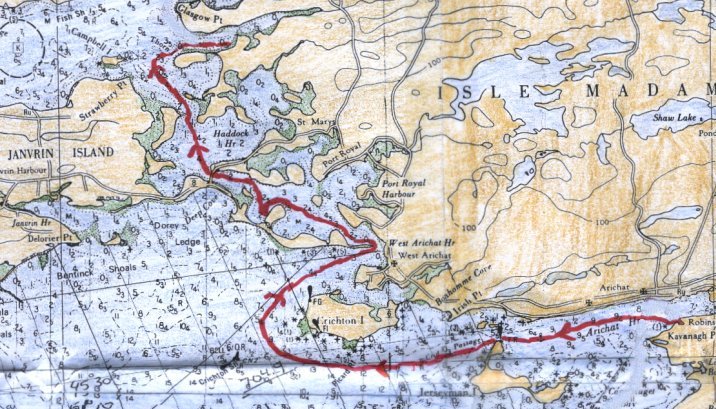 It took almost an hour to ghost to Crid Passage which separates Jerseyman Island from Isle Madame. Not far beyond the passage the wind died altogether and I rowed past Crichton Island. A couple of miles further out in the strait is Cerebus Rock. In 1970 the tanker "Arrow" broke apart on this rock contaminating the waters and shoreline with its cargo of Bunker C. This shipwreck was one of Canada's major oil spills. |
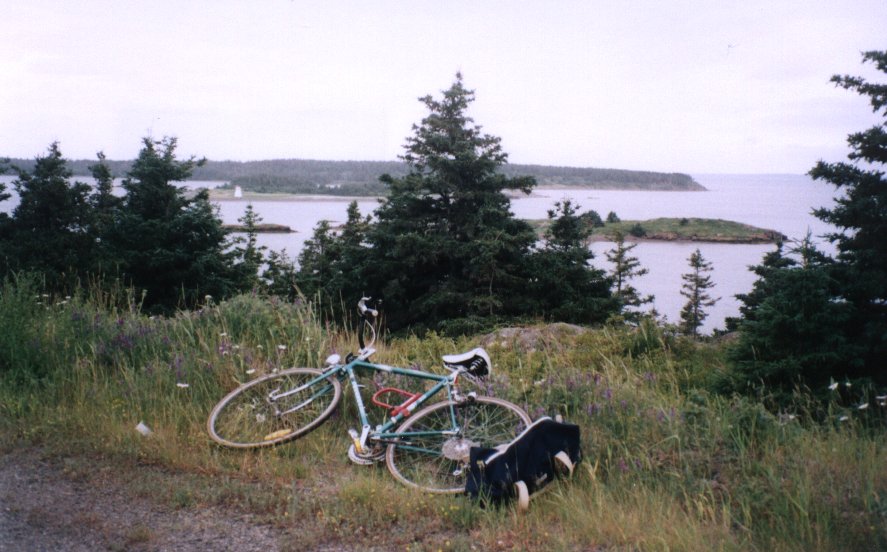 |
|
.. |
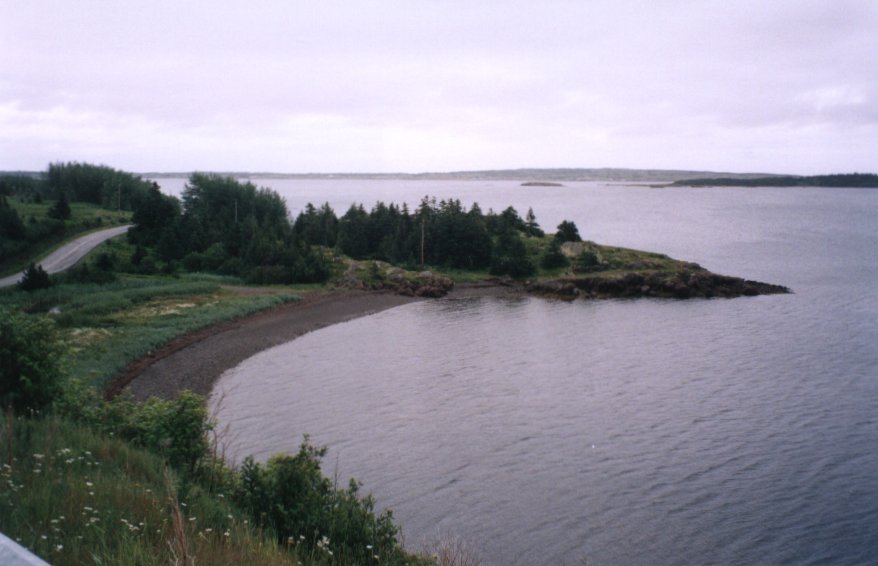 |
|
.. |
| Rather than sail around the exposed
coast of Janvrin Island, I planned to follow the inner waterway that
connects Arichat to Lennox Passage and passes behind Janvrin Island.
This sheltered passage has been used for two centuries by small coastal
vessels when the Atlantic is too rough. Once into West Arichat Harbour,
the waterway twists behind a long extended barrier beach composed of low
spruce-covered hills joined by gravel bars which shelter LeBlanc Harbour
and Haddock Harbour.
As I rowed toward the head of West Arichat Harbour a southeast wind quickly began to rise. I was relieved that soon I would be in the waterway and off the exposed coast. Nearing the tip of the gravel spit off the entrance to LeBlanc Harbour, I could feel the tide tugging at Naomi's bow. Turning around to look, I was dismayed to see the ebb pouring out of the narrows. The main current was rushing along the far shore and circling violently in West Arichat. There was a great deal of turbulence and eddies and no way I could sail or row Naomi through that. I would have preferred to put the anchor down and wait out this flow, but I was worried about the approaching southerly weather. I decided to use the motor to enter the channel. Staying as close to the inside end of the spit and with just enough depth so the propeller and rudder wouldn't touch the bottom, I edged Naomi around the point. It would have been impossible to stem the tide further out. Even at the inside edge of the flow, she handled poorly in the eddies and backflow. Once through the narrows, I brought Naomi ashore in a cove sheltered from the south winds by a hill. Naomi dried out as the tide ebbed. |
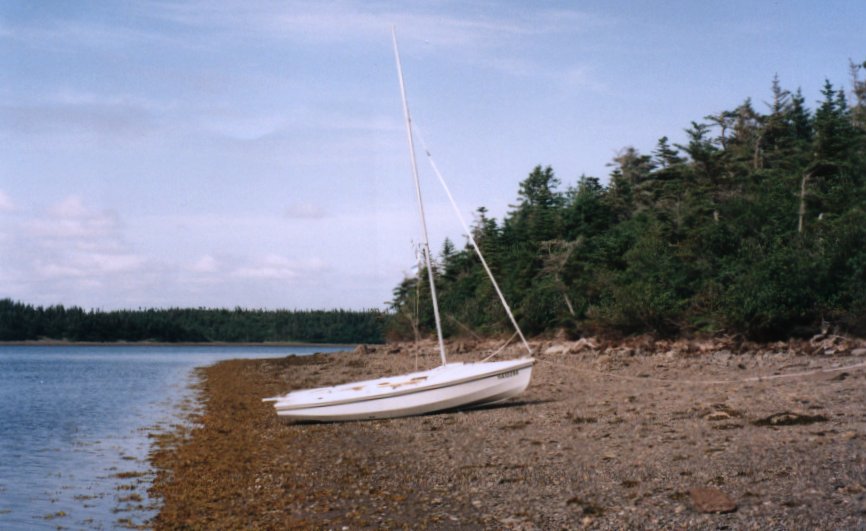 |
|
.. |
| I hiked along the gravel beaches and dirt paths leading towards Janvrin Island. I wanted to see what the tide was doing below the Bailey bridge at Mousseliers Passage. The current was now flowing north at a determined rate under the bridge. Two gravel bars with a series of tall withies marking the approaches were exposed. Without local knowledge of times of slack water and maximum flow, this confined passage was confusing. I'd just have to wait till the current subsided. |
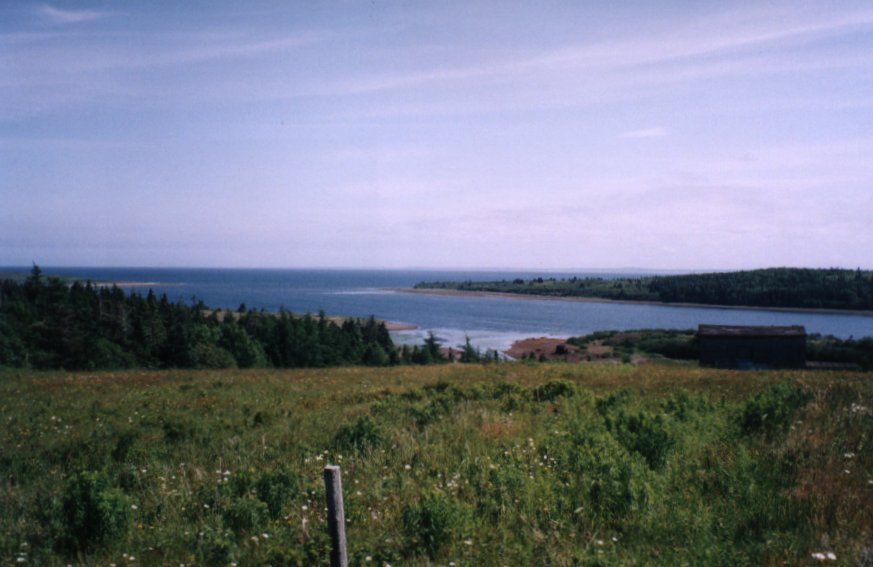 |
|
.. |
| The day was still sunny so I decided
to walk to the village of Janvrin Harbour. Just as I started down
the road, a car stopped-- its driver offering me a ride. Later in
the afternoon I returned along the shore line to Naomi. Since
she was still aground, this was a convenient time to cook supper while
waiting for the tide to float her off.
The sky was rapidly becoming dark and ominous in the south, and the wind blew around both ends of the hill. I needed to find a more sheltered anchorage for the night. On the chart, the inlet between Thorn Island and Glasgow Point at the mouth of Lennox Passage looked suitable. With the mast lowered and using the motor, I approached the bridge at Mousseliers Passage. The tide was in flood now but I thought it shouldn't be too difficult. Using the 4 H.P. motor and with a stiff wind pushing from astern, Naomi still barely clawed her way under the cramped bridge and through the channel. I was worried she might lose way and swing around under the bridge, damaging the mast or tabernacle. With hindsight, I should have removed the mast and lashed it to the deck with shockcord. After crossing Haddock Harbour, there were two more narrows between the mainland and Janvrin Island. There was a considerable tidal flow through both sections but again I used the motor and here Naomi pushed through without difficulty. The inlet between Thorn Island and Glasgow Point was uninhabited with tree-covered hills right down to the waterline. I lowered the anchor as close to shore as possible before rigging the boom tent. The wind continued to strengthen and brought with it fog and drizzle. Using the motor in the waterway seemed a crude way to deal with tides but with the approaching weather, was reasonable in a way. |
|
Wednesday, July 21 I spent the day onboard Naomi while at anchor. Trees on the hilltops bent to the wind and rain blew horizontally. In spite of Naomi being sheltered from most of the weather, everything in the boat became damp. During the day I snacked, read, and listened to the radio. Towards evening the gale had passed but it was too late to move on. The forecast for Thursday was for clearing weather and moderate southwest winds in the afternoon. |
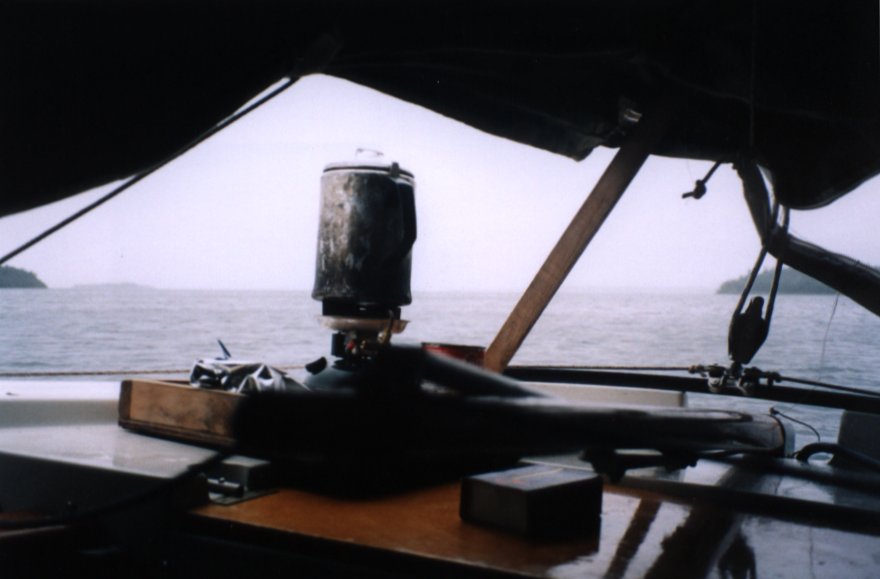 |
|
|